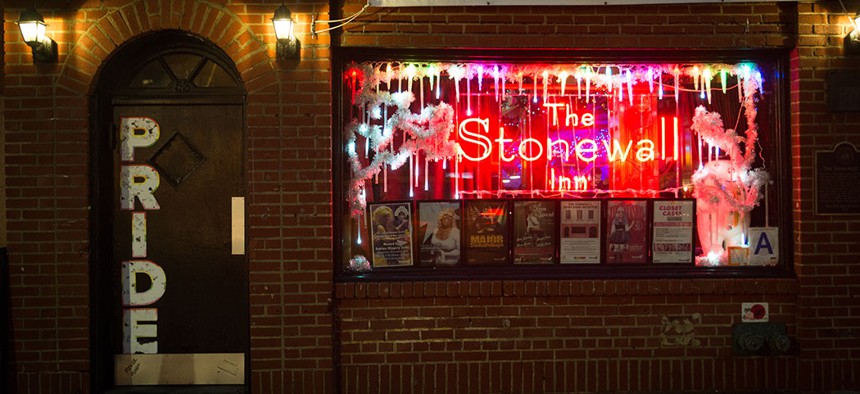New York State
New York’s LGBTQ milestones since Stonewall
New York’s LGBTQ milestones since Stonewall: a timeline of key developments over the past 50 years.

The Stonewall Inn, site of the 1969 riots. Dev Chatterjee/Shutterstock
While LGBTQ history goes back further than the Stonewall rebellion, the 1969 event was a major turning point in the fight for gay rights, not just in New York City but across the country.
This year marks the 50th anniversary of those riots, and WorldPride is coming to the city to remember how far the LGBTQ community has come. As members of the community celebrate the achievements of the past half decade, City & State looks back at some key moments in New York state’s march toward same-sex marriage and beyond.
1969
At the time, the Stonewall Inn was a Mafia-owned gay bar prone to police raids. A series of violent demonstrations broke out in response to a police raid early in the morning on June 28.
1970
On the one-year anniversary of Stonewall, New York City held the one of the first gay pride parades in the nation, organized by gay rights activist Craig Rodwell and others.
1971
The Gay Activists Alliance staged a protest at the New York City Clerk’s Office where they performed a “takeover” of the Marriage Bureau to protest legal action threatened by the City Clerk against a Greenwich Village church that was performing civil unions.
In the state Legislature, the Sexual Orientation Non-Discrimination Act was introduced for the first time.
1977
New York gets its first mainstream weekly LGBTQ newspaper, Gaysweek, founded by Alan Bell.
1980
The state Court of Appeals case New York v. Onofre eliminated most remaining laws against sodomy in New York.
1981
Playwright and LGBTQ activist Larry Kramer held a meeting with dozens of gay men in his New York City apartment to discuss the HIV/AIDS epidemic, which hit the city especially hard, and to raise funds to support HIV/AIDS research.
1983
The Gay, Lesbian, Bisexual and Transgender Community Center, today commonly referred to simply as The Center, opened in Greenwich Village, where it remains a staple in the city’s LGBTQ community.
1985
The Gay and Lesbian Alliance Against Defamation (GLAAD) was formed in New York City in protest of the New York Post’s coverage of the HIV/AIDS crisis, which they considered homophobic.
1986
The New York City Council passed the Lesbian/Gay Civil Rights bill, which banned discrimination based on sexual orientation in housing, employment and public accommodations.
1991
Deborah Glick, a lesbian, became the first openly LGBTQ person elected to the state Legislature, where she still serves in the Assembly.
1992
Thomas Duane became was one of the first two openly LGBTQ people elected to the New York City Council.
2002
The Sexual Orientation Non-Discrimination Act passed the state Legislature and was signed into law, taking effect early the next year.
2003
The Gender Expression Non-Discrimination Act was introduced in the state Legislature for the first time, which would add gender indentity and expression as protected classes against discrimination and hate crimes.
2004
New Paltz Mayor Jason West married 25 same-sex couples, for which he was charged with 19 misdemeanors by the Ulster County district attorney.
2011
New York passed the Marriage Equality Act, becoming one of the early states to legalize same-sex marriage.
2013
New Yorker Edith Windsor won the landmark U.S. Supreme Court case United States v. Windsor, which found that restricting the federal interpretation of “marriage” to only between a man and a woman was unconstitutional.
2019
The Gender Expression Non-Discrimination Act passed the state Legislature and was signed into law.

NEXT STORY: How New York almost didn’t legalize same-sex marriage